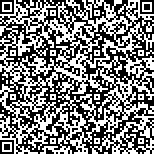下载中心
优秀审稿专家
优秀论文
相关链接
摘要

传统的地震烈度评估方法依靠人为实地调查,易造成部分地区数据缺失,导致等烈度线丢失细节信息。本文以实地调查的等烈度线分布为基准,结合保存的唐山地震震后航片资料、卫星图像和其他资料,从宏观上更细致地开展了唐山地震的等烈度线图判定研究。首先,利用地震后的航空照片和地震前美国锁眼(KH)卫星图像进行对比分析,详细判读典型震害建构筑物目标、喷砂冒水等,总结影像判读标准,采用面向对象分类变化检测的方法确定极震区和重点破坏区分布;然后,利用地震前后的航片、KH卫星、美国陆地资源卫星Mss图像,选取2495个建筑区样本点,基于图像纹理信息熵的相关性分析对重点村镇目标进行变化检测处理,确定各村镇建筑物的破坏程度及其趋势;最后,综合分析历史航片、余震等资料,分析地震发震断层等多源遥感资料,基于反距离加权插值的方法对样本点进行插值获取地震烈度分布区域,综合多源遥感资料实现了唐山地震的地震烈度区的判读,与前人实地调查结果对比,综合多源遥感图像判定的地震烈度区与实地调查结果形态相近,证明该方法可用于地震烈度评估。
At 3:42 on July 28, 1976, a strong earthquake of magnitude Ms7.8 with a focal depth of 12 km and an epicentral intensity of XI degrees occurred in the Tangshan area of Hebei Province. The earthquake caused severe casualties and property losses and the most serious damage in Tangshan, but it also spread to Beijing and Tianjin. Equal intensity maps of the Tangshan earthquake were studied in detail by using relevant preserved data. After the Tangshan earthquake, significant departments conducted aerial photography for the first time and gathered the most valuable information for the earthquake damage distribution.
Seismic damage information and sand-water blasting are interpreted and extracted by comparing KH satellite and aerial images before and after the earthquake, respectively. The image features for earthquake damage interpretation are summarized, and the meizoseismal area and damage zone are determined. Change detection in major counties is processed using aerial, KH, and Landsat MSS images before and after the earthquake. A total of 2495 building samples are selected, and the change detection of key villages and town targets is performed through correlation analysis. The damage degree and its trend are studied on the basis of change detection. The earthquake fault is analyzed using aerial images, aftershock distribution, and aeromagnetic images. Then, the intensity zone is determined by interpolating sample points through the method of inverse distance weighted interpolation. The seismic intensity zone of the Tangshan earthquake has been interpreted by combining multi-source remote sensing data. This map has finer details than previous results but with high similarity.
This paper comprehensively used multi-source remote sensing data to realize the determination of seismic intensity zones. The results obtained are as follows: (1) The aerial images after the Tangshan earthquake were mosaicked, the characteristics of the earthquake damage in Tangshan were analyzed, and interpretation marks of the aerial images were established. (2) US KH satellite and aerial images before and after the earthquake, respectively, were analyzed comparatively. The damage to buildings in Tangshan City and its surrounding towns and the collapse rate information were extracted by using the change detection method based on object-oriented image processing. The 90.9% collapse rate of Tangshan City and its surrounding towns was calculated through a comprehensive analysis. (3) Landsat, aerial, and KH images of cities and towns before and after the earthquake were obtained, and 2495 building zone samples were clipped from images. Correlation coefficients were determined from pre- and post-earthquake images. The correlation analysis shows that the correlation coefficient is low from towns near the epicenter and high from towns far from the epicenter. This result is consistent with the actual situation. (4) On the basis of typical tectonic interpretation marks in aerial films, the active tectonic map of the Tangshan area was obtained using KH, aerial, and ETM images, which provide the information basis for the direction of intensity distribution. (5) On the basis of these results, with reference to the previous research intensity map, the threshold of correlation points was determined through statistical analysis. The intensity distribution area was identified by interpolating the sample data on the basis of the IDW interpolation method. The trend of intensity maps was simplified using seismogenic faults, historical earthquakes, and other tectonic data. The generated earthquake intensity has changed in detail, but it is similar to the field survey results.
Rapid mapping of intensity maps after earthquakes is significant in deploying rescue work and reducing casualties and property losses caused by earthquakes. On the basis of remote sensing data, the intensity map was formulated, and it was revised using numerous methods for further precision and accuracy. With a variety of sensors and the launch of UAV photogrammetry and remote sensing, remote sensing technology will play an increasingly important role in drawing and revising seismic intensity maps. The seismic intensity assessment in this study requires a high level of sample data and a uniform distribution. In the future, additional samples should be selected to improve the accuracy of seismic intensity estimation.

